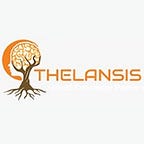Nephrotic Syndrome (NS) — Market Outlook, Epidemiology, Competitive Landscape, and Market Forecast Report — 2023 To 2033
Nephrotic syndrome (NS) is characterized by significant proteinuria (exceeding 40 mg/m² per hour), leading to hypoalbuminemia (less than 30 g/L), hyperlipidemia, edema, and various complications. It arises from increased permeability across the damaged basement membrane in the renal glomerulus. This abnormality in glomerular permeability can be primary, with kidney-specific diseases, or secondary, resulting from congenital infections, diabetes, systemic lupus erythematosus, neoplasia, or certain medications. Primary causes of NS include intrinsic kidney diseases like membranous nephropathy, minimal-change nephropathy, and focal glomerulosclerosis. Secondary causes encompass systemic diseases such as lupus erythematosus, diabetes mellitus, and amyloidosis. Congenital or hereditary focal glomerulosclerosis may result from genetic mutations affecting podocyte proteins like podocin, nephrin, or cation channel 6 protein, with minimal change in glomerulonephritis being the most prevalent cause in children. Medications can also induce nephrotic syndrome, including minimal-change disease associated with nonsteroidal anti-inflammatory drugs (NSAIDs) and membranous glomerulonephritis linked to gold, bucillamine, and penicillamine, commonly used for rheumatic diseases. NS can be classified as primary or secondary. Primary forms stem from kidney-specific disorders damaging the glomeruli, while secondary forms involve systemic conditions affecting other body parts. Common disorders causing secondary NS include diabetes mellitus, systemic lupus erythematosus (lupus), and certain viral infections.
- In the United States, 2–4 out of every 100,000 children are diagnosed with primary NS annually, with a higher incidence in males compared to females.
Thelansis’s “Nephrotic Syndrome (NS) Market Outlook, Epidemiology, Competitive Landscape, and Market Forecast Report — 2023 To 2033” covers disease overview, epidemiology, drug utilization, prescription share analysis, competitive landscape, clinical practice, regulatory landscape, patient share, market uptake, market forecast, and key market insights under the potential Nephrotic Syndrome (NS) treatment modalities options for eight major markets (USA, Germany, France, Italy, Spain, UK, Japan, and China).
KOLs insights of Nephrotic Syndrome (NS) across 8 MM market from the centre of Excellence/ Public/ Private hospitals participated in the study. Insights around current treatment landscape, epidemiology, clinical characteristics, future treatment paradigm, and Unmet needs.
Nephrotic Syndrome (NS) Market Forecast Patient Based Forecast Model (MS. Excel Based Automated Dashboard), which Data Inputs with sourcing, Market Event, and Product Event, Country specific Forecast Model, Market uptake and patient share uptake, Attribute Analysis, Analog Analysis, Disease burden, and pricing scenario, Summary, and Insights.
Thelansis Competitive Intelligence (CI) practice has been established based on a deep understanding of the pharma/biotech business environment to provide an optimized support system to all levels of the decision-making process. It enables business leaders in forward-thinking and proactive decision-making. Thelansis supports scientific and commercial teams in seamless CI support by creating an AI/ ML-based technology-driven platform that manages the data flow from primary and secondary sources.
